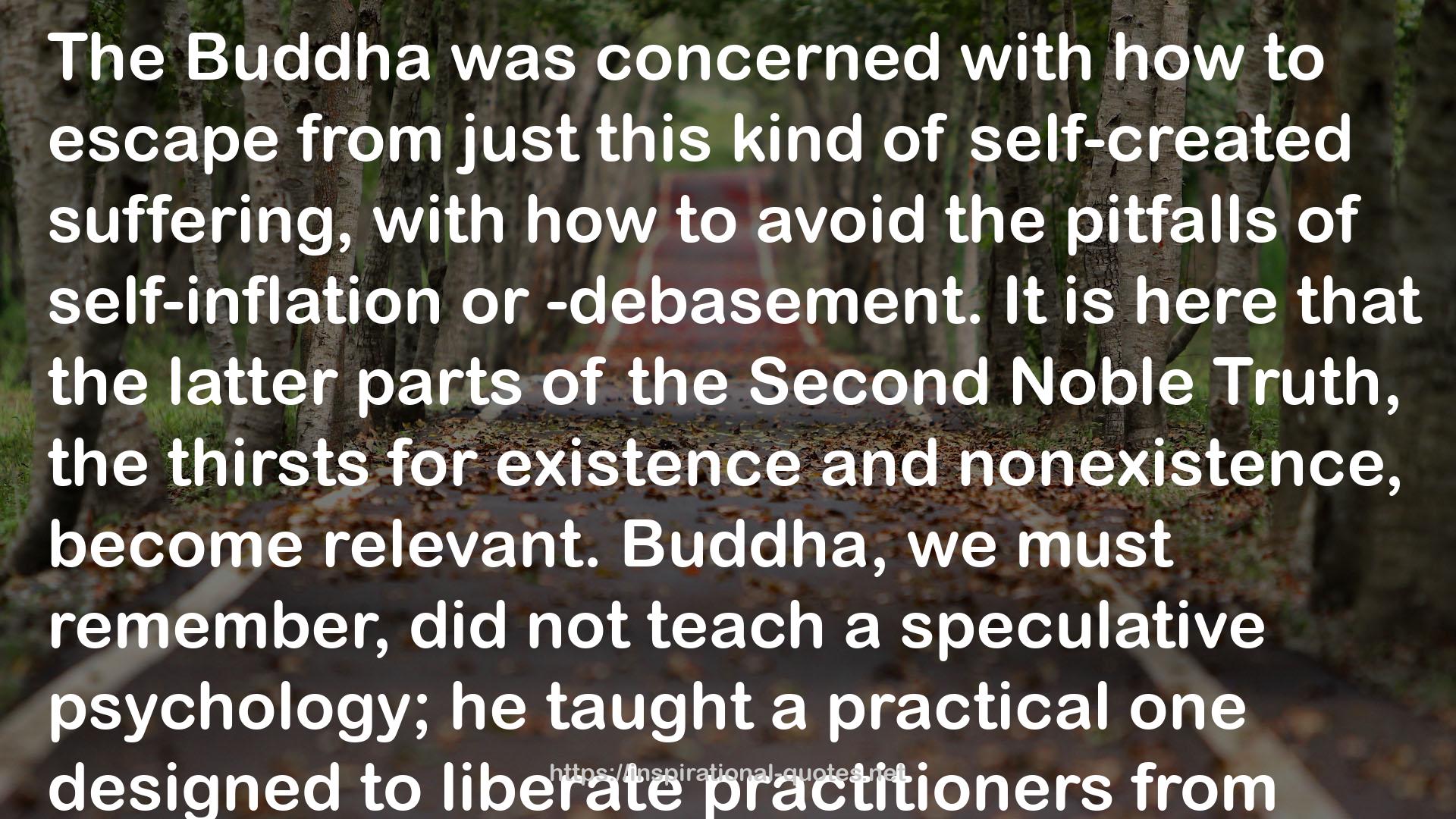" The Buddha was concerned with how to escape from just this kind of self-created suffering, with how to avoid the pitfalls of self-inflation or -debasement. It is here that the latter parts of the Second Noble Truth, the thirsts for existence and nonexistence, become relevant. Buddha, we must remember, did not teach a speculative psychology; he taught a practical one designed to liberate practitioners from dissatisfaction. “I do not teach theory,” he said, “I analyse.”2 He refused to answer questions that would feed either the tendency to cling to some kind of absolute romanticized ideal or that would enable nihilistic distancing, the two trends that are subsumed under the headings of existence and nonexistence and that become the basis for many powerful religious, psychological, and philosophical dogmas. There were, in fact, fourteen subjects that the Buddha repeatedly refused to discuss, all of them searching for absolute certainty: 1) Whether the world is eternal, or not, or both, or neither. 2) Whether the world is finite (in space), or infinite, or both, or neither. 3) Whether an enlightened being exists after death, or does not, or both, or neither. 4) Whether the soul is identical with the body or different from it. The Buddha taught that to attempt a definitive answer to these questions would give the wrong idea, that to do so would only feed the tendency to cling to an absolute or to nihilistically reject, neither of which he found useful. He never taught the existence of a true self, nor did he ever support the idea of a chaotic universe in which “nothing matters” and individual actions are of no importance. Rather, he encouraged a consistent doubting of all fixed assumptions about the nature of things. In a teaching that he gave to a skeptical follower named Malunkyaputta, he likened the asking of questions about the ultimate nature of things to a man wounded by an arrow refusing to have the arrow taken out until all of his questions about who the assassin was, where he came from, what he looked like, what kind of bow he was using, and what make of arrow had been shot had been addressed. “That man would die, Malunkyaputta,” emphasized the Buddha, “without ever having learnt this.”3 "
― Mark Epstein , Thoughts Without A Thinker: Psychotherapy From A Buddhist Perspective
